
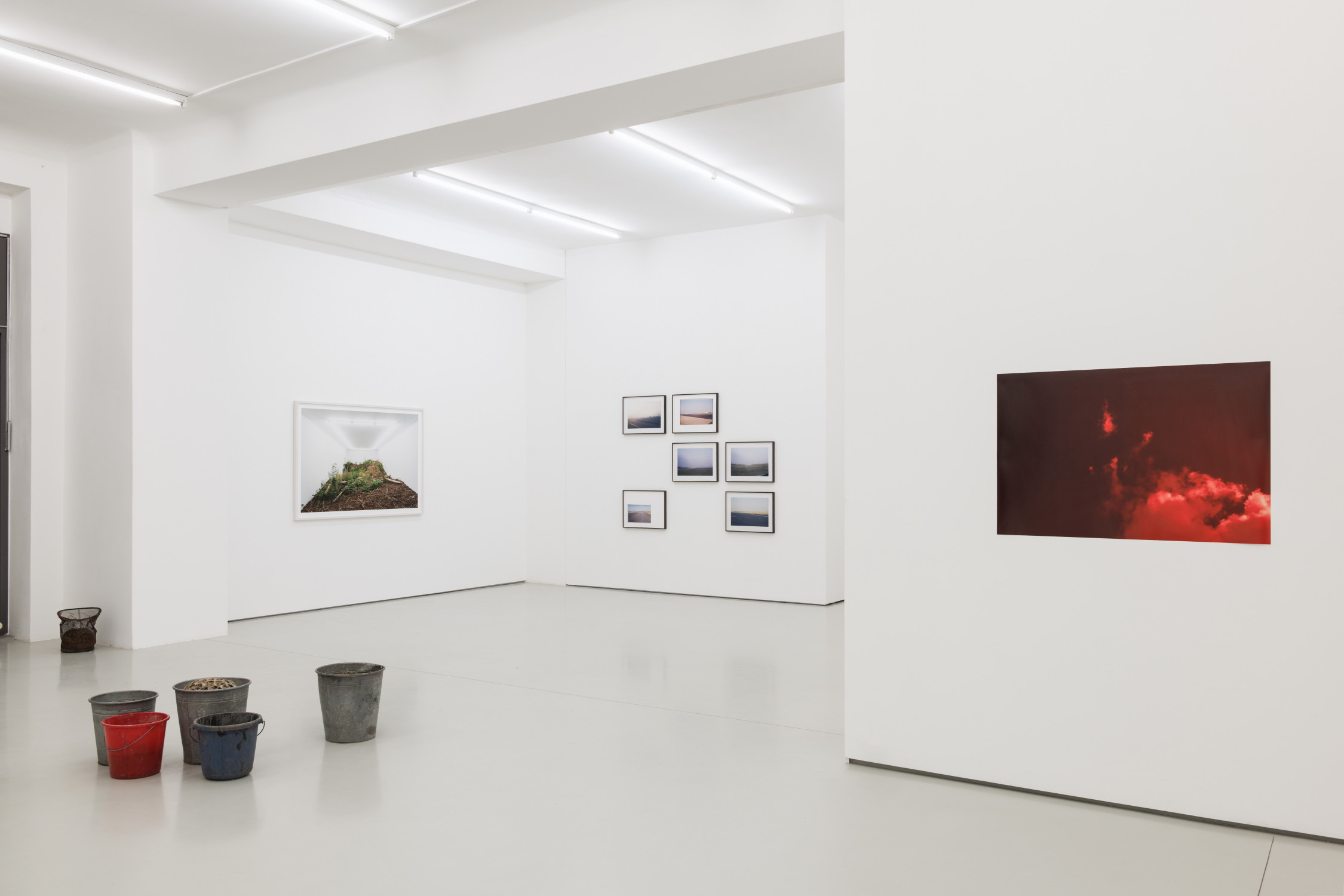
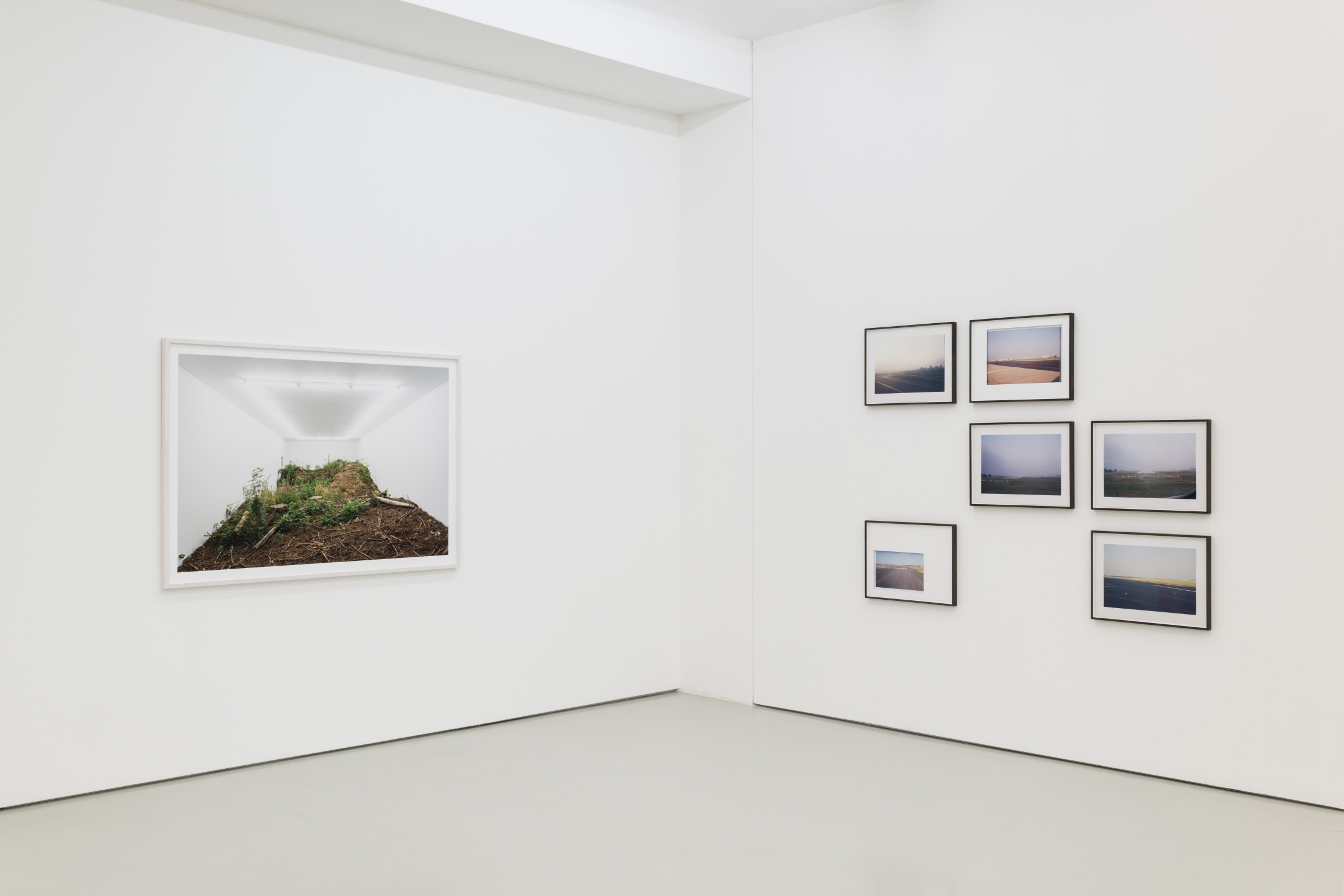
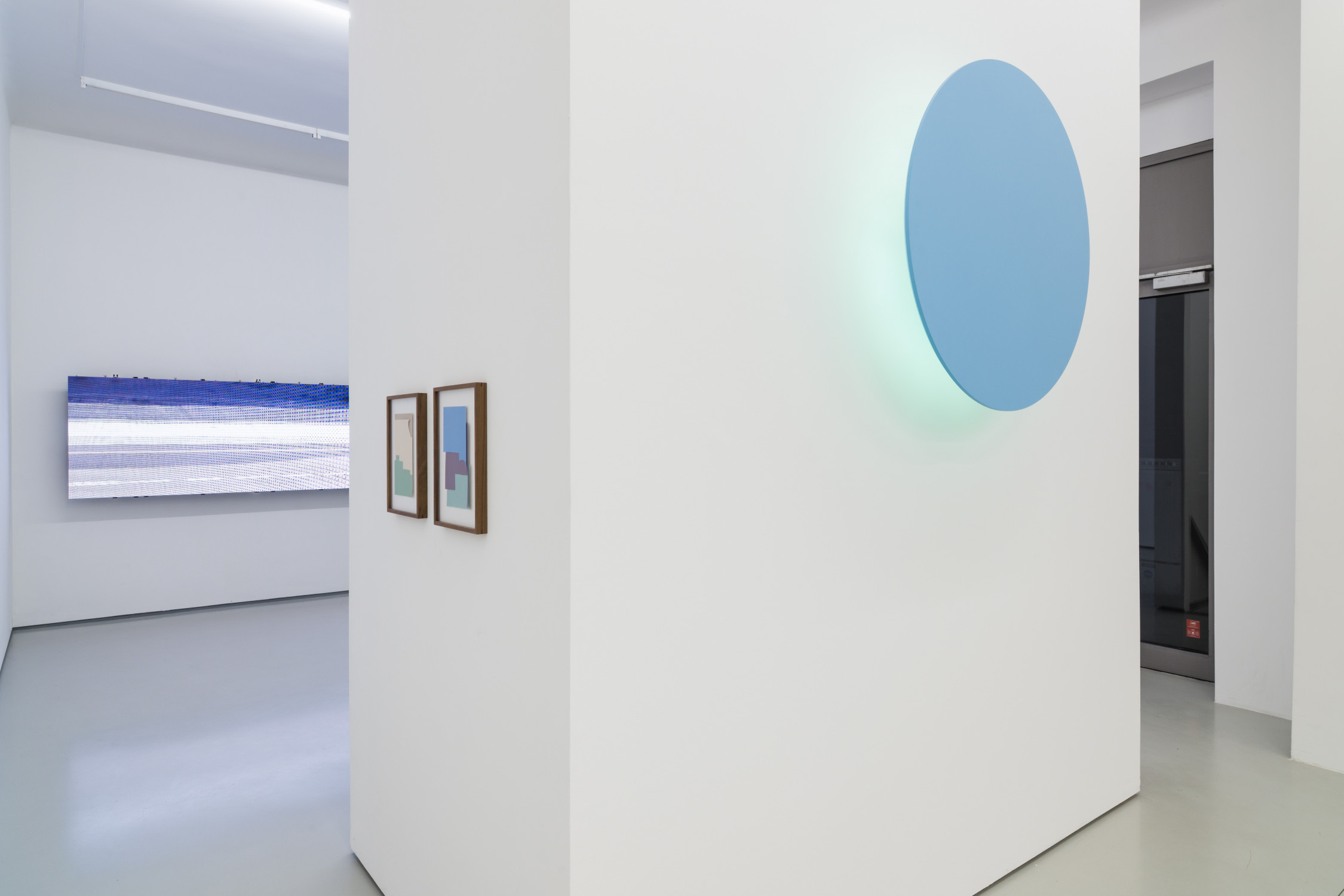
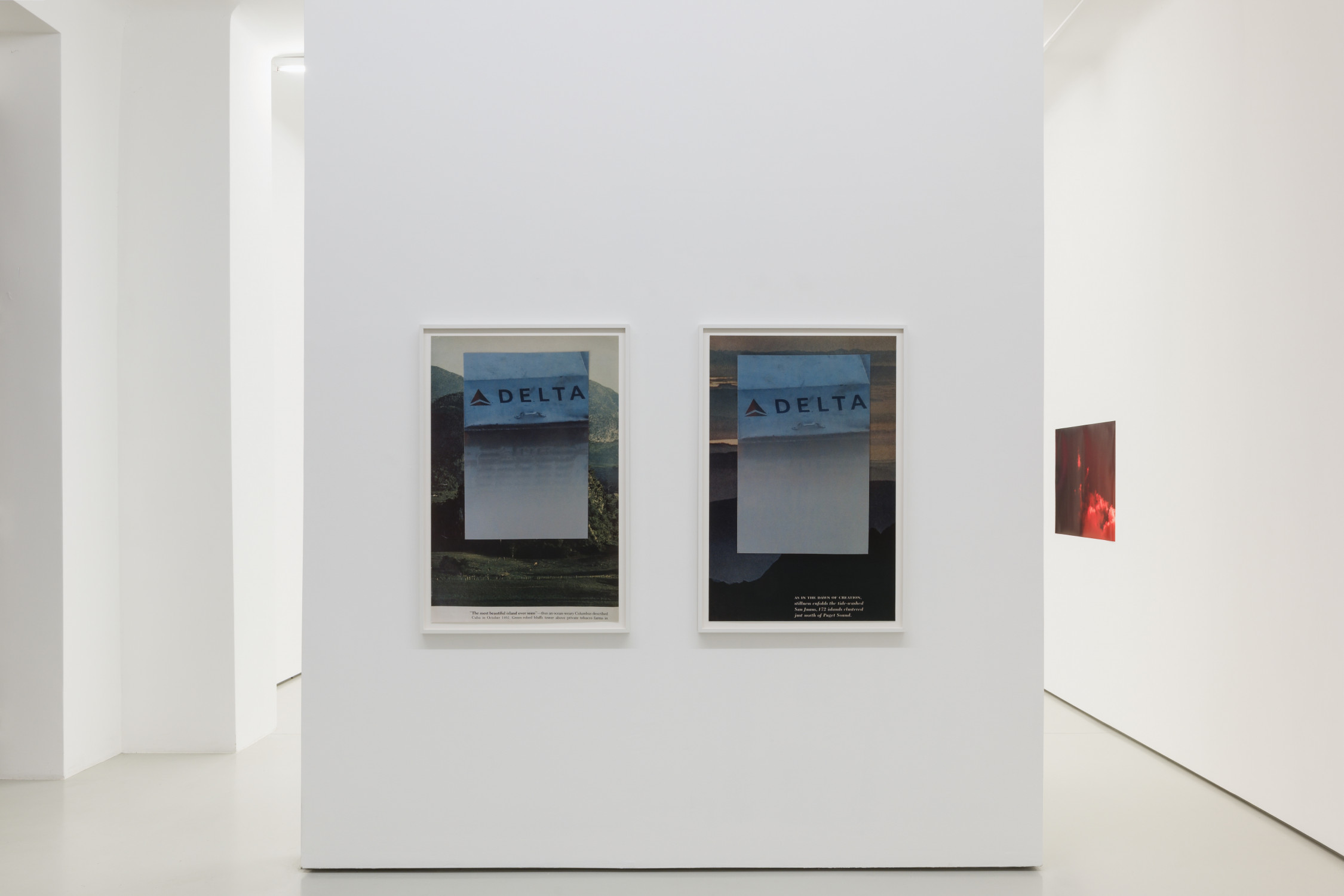
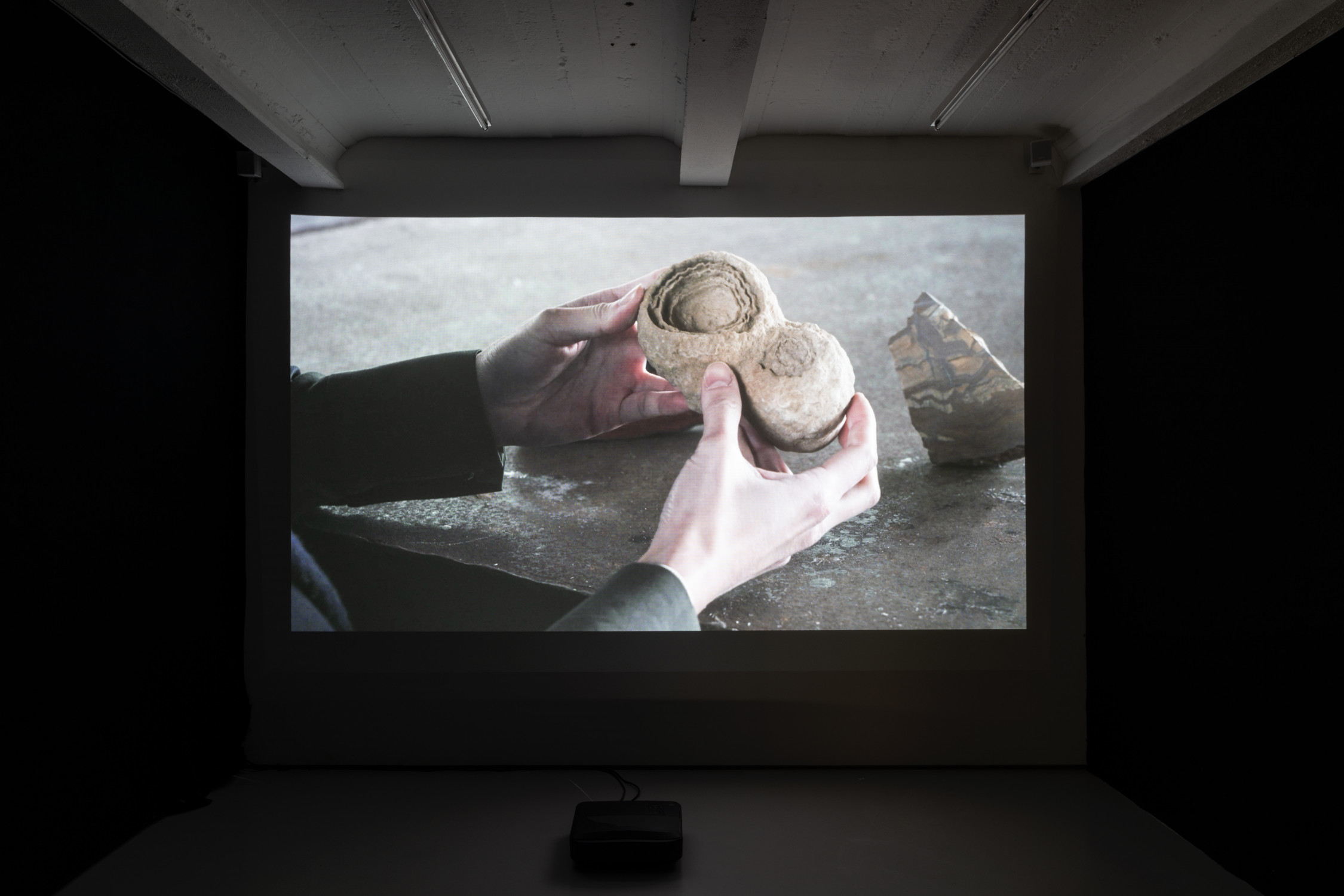
At the close of its 10th anniversary, alexander levy gallery, founded on January 2012, is presenting the exhibition The Unexpected Universe: Traces of the Anthropocene with selected works by all represented artists. Together they form a cross-section of the gallery’s program, which has been systematically developed over the past decade. The focus is on sociopolitical, ecological and technological themes, with particular emphasis on the future relationship between humans and nature. Common to the works is a conceptual and abstract approach, with a recurrent motif of natural or man-made borders.
This is explicitly taken up, for example, in the video work Delineation (2021) by Mischa Leinkauf. In it, the artist takes the abstract and, as it were, violent act of border delineation ad absurdum: on a wide screen, drone footage of the border installations between Israel and Egypt, Israel and Jordan, and North and South Korea runs slowly and steadily. They not only bear witness to the at times brutal interruption of the landscape, but also complement each other – played in a loop – to form an eternally continuous, never-ending, and virtually unifying line.
In the collage Transmutation (2023) by Nik Nowak, the political and territorial conflict is expanded to include the exploration of ethical boundaries. In the background are helicopters used by U.S. forces in the Vietnam War for psychological warfare against the Viet Cong. Equipped with loudspeakers, they let out eerie recordings of supposedly wandering, restless Vietnamese souls calling for surrender. Combined with the car in the foreground, which has been converted into a mobile loudspeaker and refers to the subculture of car tuning, the two selected “sound sculptures” represent the spectrum and artistic field of research Nowak explores regarding the function of sound as a source of identity and as element that shapes society.
Julius von Bismarck’s latest work Bäume ohne Grenzen (Trees without Borders), by contrast, bears witness to natural boundaries and man’s tendency to transgress them. In 2022, the artist moved a native larch from the Safiental and planted it far above the natural tree line on the Tomülpass. The single tree thereby symbolically marks the already noticeable influence of man on nature. As a living hypothesis, it indicates how this Alpine landscape could change in the future as a result of human-induced global warming. The ironic title finally turns the tree into an agent on whose actions and help the future of mankind on this planet ultimately depends.
In the latest version of his Isolation series, Fabian Knecht also looks at nature that has been shaped or even destroyed by human influence. In 2022, he installed a “white cube” in the Harz Mountains, where the forest has been remarkably damaged by heat and bark beetles. In the installation Isolation (Waldstück) there are no trees to be seen, but tree stumps, dead branches, grass, flowers, and new saplings that are gradually conquering the fallow area.
While the works of Julius von Bismarck and Fabian Knecht reveal the indirect influence of humans on nature, Colin Snapp repeatedly turns his focus to the phenomenon of global tourism, examining the traces and damage, the collective culture of images and memories, and the social behaviors it produces. In Delta (2016), a series of prints, the artist combines idealized landscapes advertised as travel destinations with advertisements for Delta airline. The image creations symbolically demonstrate how nearly untouched places are developed for tourism, labeled, and made globally accessible, while they subsequently lose their originality.
Sinta Werner’s series Enjambement (2020) also takes aim at a place directly associated with travel: the airfield. On a pictorial level, the artist carved out its inherent character of transition, closely connected to expectations or dreams. And so, in her works – due to Werner’s intervention in the reproduction process of these photographic images – reality and illusion, the markings on the runways and mystical-looking rays of light are combined to form geometric compositions.
The paper collages by Vicky Uslé (since 2008) can also be understood as distorted echoes of real models. The artist layers fragments of monochrome paper on top of each other and, by combining negative and positive forms and alternating between foreground and background, creates associative references to the built and natural environment. Her reduced views reveal the collective pictorial memory and visual experiences that connect us worldwide: in one collage the sun shines high in the zenith above the rooftops of the city, while in another a heavy, monumental monolith of buildings the view of the landscape.
With her video work Blast Furnace No.2 (2022), Su Yu Hsin also takes real events as an occasion to trace, on an imaginary level, a movement across national borders and ultimately through time and space. In her semi-fictional narrative, three central elements come together: the blast furnace that is moved from Germany to China; the material iron, melted in the blast furnace, which was created far before our solar system, and forms today the core of the earth; and the protagonist Lin, who accompanies the dismantling of the blast furnace as an interpreter and leaves behind an unfinished science fiction novel. She dreams of a solution to one of humanity’s most pressing issues – clean and renewable energy.
The work Blaue Sonne (2022) by Felix Kiessling, with whom Alexander Levy realized his first solo exhibition even before founding his own gallery, also suggests an astrophysical background. Indeed, the artist has repeatedly dealt with outer space. In Blaue Sonne, however, he deliberately distances himself from real references to further sharpen the underlying concept of his series Antisonne (2016-ongoing). No more than the title of the work, its circular shape and the light radiating from it allow any association with the star that enables life on Earth. Kiessling’s abstract light installation – a blue object with a green glow – rather leads into the realm of the imagination: it may appear as a warning of future apocalyptic conditions.
A doomsday scenario can also be sensed in the photographic work 6 hours, 36 minutes and 5 seconds to midnight (2022) by Ella Littwitz. The view of the sky, which is usually pacifying, appears threatening. The artist captured it with a multispectral camera, which in turn was equipped with filters to precisely capture those light frequencies that remain invisible to the human eye and the standard camera. The photograph is part of a new body of work dedicated to existential questions that have defined the artist’s life in the immediate past. This is also suggested by the title: it shows the time remaining from the moment the photograph was taken until midnight and thereby cites the symbolic Doomsday Clock, designed as early as 1947. The latter indicates how much time humankind has left until his self-inflicted demise. Currently, there are 100 seconds until midnight.
Finally, Gereon Krebber’s sculptures open the prospect of a world after our time. The used buckets from the artist’s studio suddenly take on a life of their own: Hittis (2016-2022), which seem alive, are bundles of tape that thrive in a bath of wax or cast resin. They testify to Krebber’s delight in breathing life into his works – in keeping with the classical sculptor’s myth – and, not least through their titles, lend them a comic-tragic character.
Text by Lydia Korndörfer